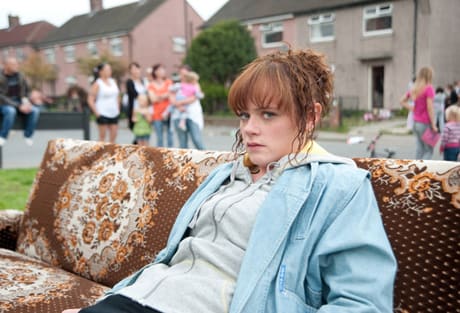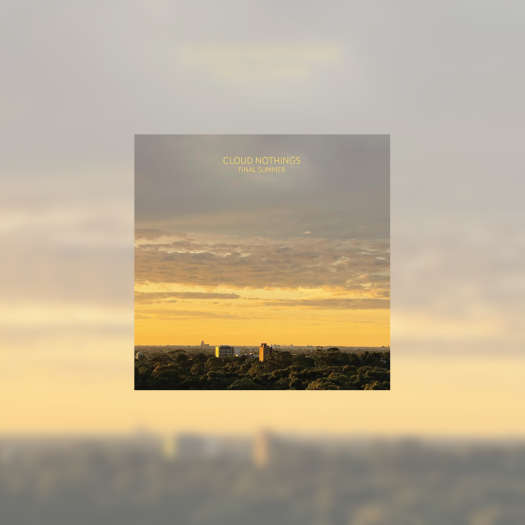The title of this experimental documentary, The Arbor, comes from lower class residential neighbourhood Brafferton Arbor, located between Bradford and Halifax, in the northern part of the UK, which is where young playwright Andrea Dunbar resided and penned a play of the same name at the age of 15.
Premiering at London's Royal Court Theatre in 1980, the stage play brought significant attention to the young, aspiring writer, detailing her semi-autobiographical struggles with teen pregnancy and an abusive, alcoholic father.
Clio Barnard's deliberately-paced, haunting feature documentary debut covers these historical titbits in the opening, giving context for the shock of immediate fame and providing some insight into Dunbar's perspective on having a mixed-race baby with a Pakistani man in a fairly racist time and locale. Utilizing recorded interviews with her three adult children – Lorraine, Lisa and Andrew – each with a different father, as well as foster parents and other relatives, she has actors lip-sync the dialogue in various locales, performing the interviews to heighten the dramatic component of this true story.
Intermittently, various acts from the titular play break up the interviews, performed by teens in a playground of Brafferton Arbor, providing artistic context for the now deceased subject. Although, as the documentary goes on, we realize that the focus is less on Andrea and more on how her struggles with alcohol and drug dependency transferred to oldest daughter Lorraine, whose sense of not belonging and personal resentment led to an endless pattern of destructive behaviour.
While the actual story and variety of perspectives on the subject do shed interesting light on people in pain and the simplicity of singular, self-centred thinking, it's hard not to wonder if it would sustain more than 20 minutes of viewing if not for the creative narrative device. The actors portraying these people are surely more compelling than the actual parties and the dreamlike, intentional progression of images wouldn't have been possible with actual filmed interviews.
It's fortunate that Barnard found a way to communicate this story in a new and intriguing light, constructing a documentary that not only informs and moves, but also challenges and expands upon an existing medium, making both form and content a topic of discussion.
(Kinosmith)Premiering at London's Royal Court Theatre in 1980, the stage play brought significant attention to the young, aspiring writer, detailing her semi-autobiographical struggles with teen pregnancy and an abusive, alcoholic father.
Clio Barnard's deliberately-paced, haunting feature documentary debut covers these historical titbits in the opening, giving context for the shock of immediate fame and providing some insight into Dunbar's perspective on having a mixed-race baby with a Pakistani man in a fairly racist time and locale. Utilizing recorded interviews with her three adult children – Lorraine, Lisa and Andrew – each with a different father, as well as foster parents and other relatives, she has actors lip-sync the dialogue in various locales, performing the interviews to heighten the dramatic component of this true story.
Intermittently, various acts from the titular play break up the interviews, performed by teens in a playground of Brafferton Arbor, providing artistic context for the now deceased subject. Although, as the documentary goes on, we realize that the focus is less on Andrea and more on how her struggles with alcohol and drug dependency transferred to oldest daughter Lorraine, whose sense of not belonging and personal resentment led to an endless pattern of destructive behaviour.
While the actual story and variety of perspectives on the subject do shed interesting light on people in pain and the simplicity of singular, self-centred thinking, it's hard not to wonder if it would sustain more than 20 minutes of viewing if not for the creative narrative device. The actors portraying these people are surely more compelling than the actual parties and the dreamlike, intentional progression of images wouldn't have been possible with actual filmed interviews.
It's fortunate that Barnard found a way to communicate this story in a new and intriguing light, constructing a documentary that not only informs and moves, but also challenges and expands upon an existing medium, making both form and content a topic of discussion.




